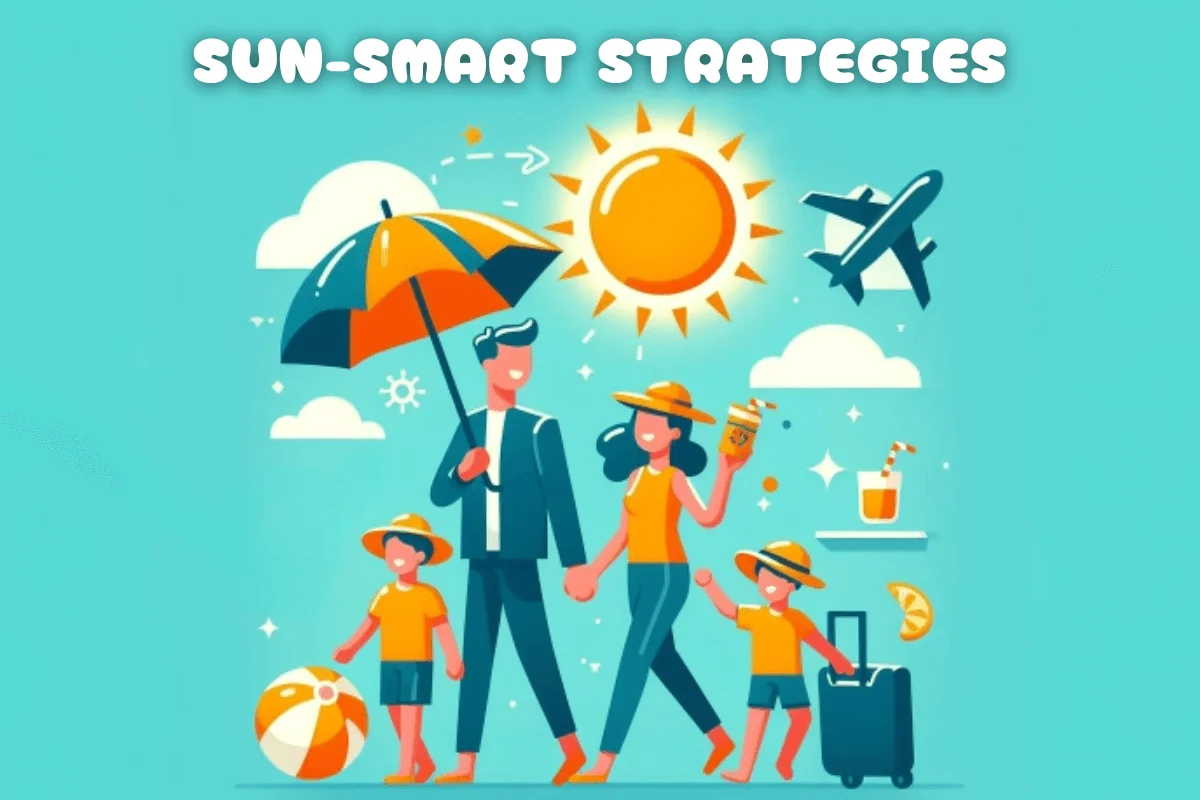As summer approaches, families start making plans to get the most out of their leisure time. These long days provide ample opportunities to go out and do fun stuff you can’t usually do. For kids too, summer vacations are the most sought-after period of the year. Parents often struggle to find productive uses for these vacations for themselves and their kids.
Though going out for vacations or even playing out during day hours is an encouraging activity, some precautions are necessary to escape the potentially harmful effects staying under the sun for long hours can cause. Sun exposure can have serious ramifications for everyone, especially the kids. Climate Change discourse has raised some awareness about the topic but more needs to be done. This article provides some essential sun-smart strategies to make sure everyone in your family enjoys their summer trips while avoiding the negative impacts of prolonged exposure.
Understanding Sun Safety
Before moving on to sun protection strategies, you must first understand how can exposure to sun be harmful for us. Ultraviolet or UV rays are electromagnetic radiations emitted from the sun. They are classified into 3 types depending on their wavelengths, UVA, UVB, and UVC. These radiations are necessary for various functions on earth which makes life possible. However, prolonged exposure has been found detrimental to human health.
Most harmful UV rays are blocked by the ozone layer from reaching the earth’s surface. But as the layer becomes thin, more and more such radiations reach the surface. UVB is found to be the most dangerous and is the prime suspect of causing various skin cancers. Other effects include sunburn, premature skin aging, wrinkles, spots, and sagging among others.
Children are more prone to such effects due to their sensitive skin. Ensuring protection from the sun even on cloudy days, as UV rays can easily penetrate them, is something parents should always focus on.
Appropriate Clothing for Protection
Summer clothing must have this sun-protection element in it. You can dress yourself or your kids in any way you like in the shade or at night, but during day hours your clothing should augment your protection from the sun. Using long sleeves and full lengths can help a lot. Similarly, using wide-brimmed hats while playing or relaxing outdoors is a prerequisite for protecting the face from UV rays.
UV rays can also adversely affect eyes so using sunglasses while under the sun is a good option. Tinted windows or blinds can be used to bar unwanted radiation while traveling. This can also help improve your vehicle’s air conditioner’s performance.
While buying clothes, go for the fabric with a good UPF (Ultraviolet protection factor). UPF is an indicator to measure how much ultraviolet radiation can penetrate the fabric and reach your skin. A UPF 50 fabric is believed to stop about 98% of the sun’s rays.
Last but not least, you should look for appropriate swimwear. Swimming is a favorite time for kids and adults alike in summer but without appropriate swimwear, it can cause serious exposure. A few indicators must be checked before selecting any fabric. It should have long sleeves, a good UPF rating, a high neckline, and breathable, and dark colors or prints on a tightly woven fabric.
Effective Usage of Sunscreen

Properly using sunscreen is the most important among all sun-smart strategies. Consider it the first and only line of defense in your protection against the sun, especially for your face. Sunburn is easily avoidable with the application of sunscreen.
Sunscreen comes with different SPF or sun protection factors. Make sure to select a broad-spectrum sunscreen with an SPF of at least 30 for protection against both UVA and UVB. Apply it generously to all exposed body parts i.e. face, ears, neck, arms, and legs. You must always apply it before leaving indoors and should be reapplied if sweating or swimming or towel drying after every 2 hours. It should be applied every day and even on cloudy days for UVs are always present. You may use it in any form whether spray, lotion, or stick.
For kids, try getting sunscreen specifically formulated for children. Apply generously and teach them sun safety habits from a young age.
Seek Shade

Try as much to stay in the shade as possible. The peak sun hours between 10 am and 4 pm require special consideration as the UV rays are highest during them. Park your vehicles in the shade for better productivity. Make a habit of using umbrellas while going out. You should get umbrellas for your children too. They will love them if you find ones to their liking.
Beach days require special attention. Sunscreen is a must. Other than that, use wide-brimmed hats in lighter fabrics with full sleeves. Going onto a beach without a beach tent or umbrella is not recommended.
Moreover, use natural shades as much as possible. Even if you are waiting for a bus, try to stand under a tree or board or something. Trees are a great luxury in summer and you can teach your kids their importance through practical application.
Hydration and Heat Safety

Keeping yourself hydrated is the best way to fight summer heat. Kids are required to be hydrated after short intervals. Prefer using water most of the time but juices (fresh not processed) can also be used. The same goes for adults too.
Get yourself acquainted with heat safety and teach your kids before going out. Some important points are;
- Stay Hydrated
- Avoid Strenuous activities, especially during peak hours
- Wear appropriate clothing, and accessories and apply sunscreen.
- Take regular breaks to cool off.
Heat strokes are common during summer say, most during periodic heat spells. It occurs when the temperature regulation system of the body fails. Every parent must be aware of the signs and first aid measures for this. Medical attention must be sought on signs of heat exhaustion.
Outdoor Activities
While outdoors on your vacation trips, sun safety must never be neglected. Choose activities with the least exposure to the sun during peak hours of 10 am to 4 pm. Water sports are encouraged but with proper swimwear and sunscreen. Make sure that your activities are not overly strenuous.
Regular breaks to cool off can help a lot in offsetting any heat exhaustion. Refreshing drinks like lemonades and plenty of water must be taken regularly to stay hydrated. Encourage children to go out in early mornings and late afternoons while staying indoors in between.
If you are planning your vacations for a beach, take proper protective gear with you as discussed earlier. If you are with kids, the importance of a beach tent can not be stressed enough. A pro tip is to keep your vehicle parked in the shade so that you can use its air conditioner to cool off in a short time. What this all means is, to avoid unnecessary exposure to sun.
Sun-smart Strategies: Travel Tips
Start by choosing family-friendly vacation spots. Your destination must have ample shaded areas and lots of healthy activities available for your kids. Also, keep an eye out for emergency medical services.
Whether you are going for a road trip or flying to your destination, sun safety must be your top concern. Sun safety advice, as given before, applies anywhere you go. For road trips, use blinds or get your windows tinted to shield direct UV rays. Don’t forget to apply sunscreen even when you are in the car and not directly under the sun.
Beach destination requires protection from the sun on a whole new level from fun activities to clothing. Make sure your kids take regular, refreshing breaks to refill their hydration levels. Try limiting sunbathing and going for indoor activities to enjoy your vacations.
By following these sun-smart strategies, you can enjoy your summer vacation at your favorite destination to the fullest without sacrificing the essence of summer. Sun safety is a real deal and as children are more vulnerable to heat strokes, parents must remain extra vigilant to prioritize their well-being.


1 thought on “Sun-Smart Strategies: How to Keep Kids Protected During Summer Vacation Trips”